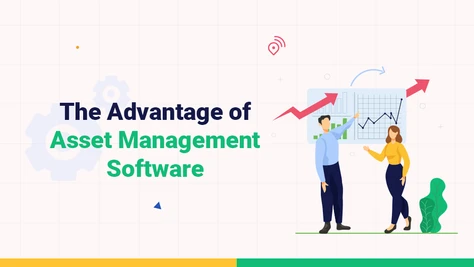The Advantages of Asset Management Software
In today’s fast-paced, resource-intensive environments, educational institutions and businesses alike must manage their physical and digital assets more intelligently. Traditional methods—like spreadsheets or manual logs—are prone to errors, lack visibility, and drain valuable time.
That’s where Asset Management Software steps in.
From real-time tracking to compliance and budgeting, asset management tools help reduce costs, streamline operations, and protect institutional resources. Let’s explore how adopting an ERP-powered asset management system can transform your asset workflows.

Real-Time Asset Tracking & Centralized Inventory
Stay on top of every asset across your institution.
- RFID, Barcode & GPS Integration: Track assets whether in use, in transit, or in storage.
- Live Inventory Updates: Automatically update asset status to avoid duplication and loss.
- Centralized Asset Database: Store purchase dates, warranties, conditions, and more—all in one searchable location.
Improved Operational Efficiency
Maximize asset performance with automated processes.
- Automated Workflows: Streamline check-ins, maintenance, procurement, and decommissioning.
- Preventive Maintenance: Set alerts to service equipment before breakdowns happen.
- Smart Allocation: Assign equipment efficiently across departments based on actual usage.
Cost Control & Budget Optimization
Track every rupee spent across your asset lifecycle.
- Lifecycle Costing: Manage from acquisition to disposal for accurate forecasting.
- Loss & Theft Prevention: Improve accountability with real-time tracking and role-based access.
- Budget Insights: Get detailed visibility into depreciation, maintenance, and usage for better planning.
Advanced Reporting & Data Accuracy
Make smarter, faster, data-driven decisions.
- Custom Reports: Generate insights on asset value, usage, repair costs, and downtime.
- Analytics Dashboards: View trends in asset performance, lifecycle, and department usage.
- Audit-Ready Records: Maintain clean, organized logs for internal and external audits.
Regulatory Compliance & Risk Management
Avoid non-compliance and mitigate risk.
- Automated Compliance Logs: Stay aligned with government, finance, or accreditation standards.
- Risk Identification: Flag underperforming or outdated assets early.
- Complete Asset History: Track every movement, modification, and user action.
Industries Benefiting: Education, IT, Healthcare, Manufacturing, Government, Logistics
Enhanced Security & Access Control
Protect sensitive data and reduce internal misuse.
- Role-Based Permissions: Control who can view, edit, or delete records.
- Secure Logins & MFA: Ensure system access is authorized and encrypted.
- Cloud Security: Protect against internal and external threats with encrypted backups.
Scalable & Customizable Platform
Adapt the software to fit your institution’s needs.
- Flexible Deployment: Choose between on-premise or cloud-based models.
- Custom Modules: Add barcode printing, mobile access, procurement, or integration features.
- ERP Integration: Connect seamlessly with finance, HR, and IT for a unified operations view.
Sustainability & Environmental Impact
Support green campus goals through smart asset management.
- Paperless Operations: Digitize all processes, from maintenance to reporting.
- Waste Reduction: Rotate and reuse underutilized resources to avoid excess procurement.
- Green Disposal: Track e-waste and dispose of obsolete items responsibly.
📌 Summary Table
Advantage | What It Delivers |
Real-Time Asset Tracking | Better visibility and resource availability |
Automated Maintenance | Longer asset life, reduced downtime |
Lifecycle Management | Timely replacement planning and forecasting |
Advanced Reporting & Dashboards | Actionable insights and compliance readiness |
Role-Based Access | Data protection and internal accountability |
Cost Control | Reduced asset loss and more accurate budgeting |
Eco-Friendly Practices | Paperless, sustainable operations |
Conclusion
Manual spreadsheets and scattered inventory logs just don’t cut it anymore. Educational institutions need a system that delivers control, accountability, and transparency—without added complexity. That’s exactly what Bloombyte’s Asset Management Software offers.
From RFID-based tracking to maintenance alerts and ERP integration, your team can manage institutional assets with confidence, clarity, and cost efficiency.
Schedule a demo of Bloombyte’s Asset Management System and experience how real-time tracking and automation can simplify your operations.